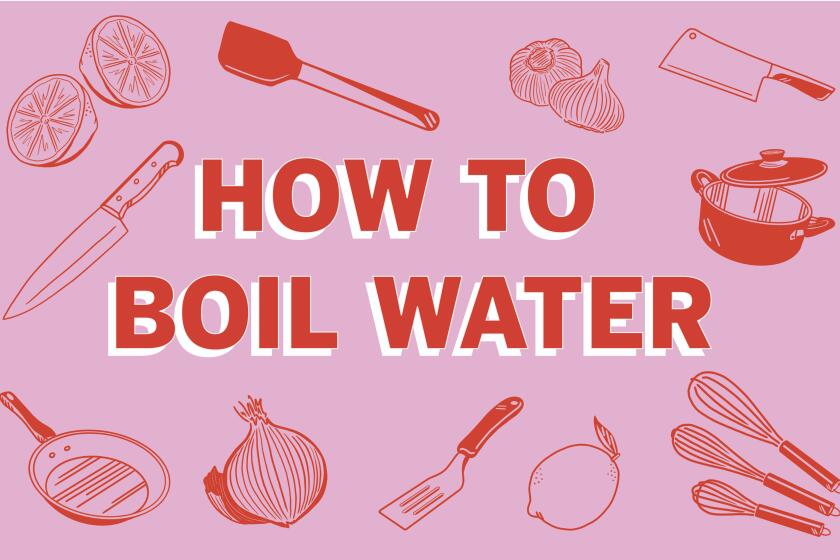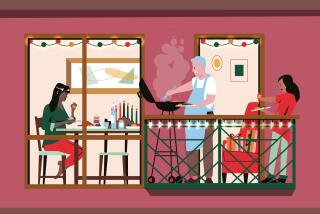The only pieces of kitchen equipment you actually need
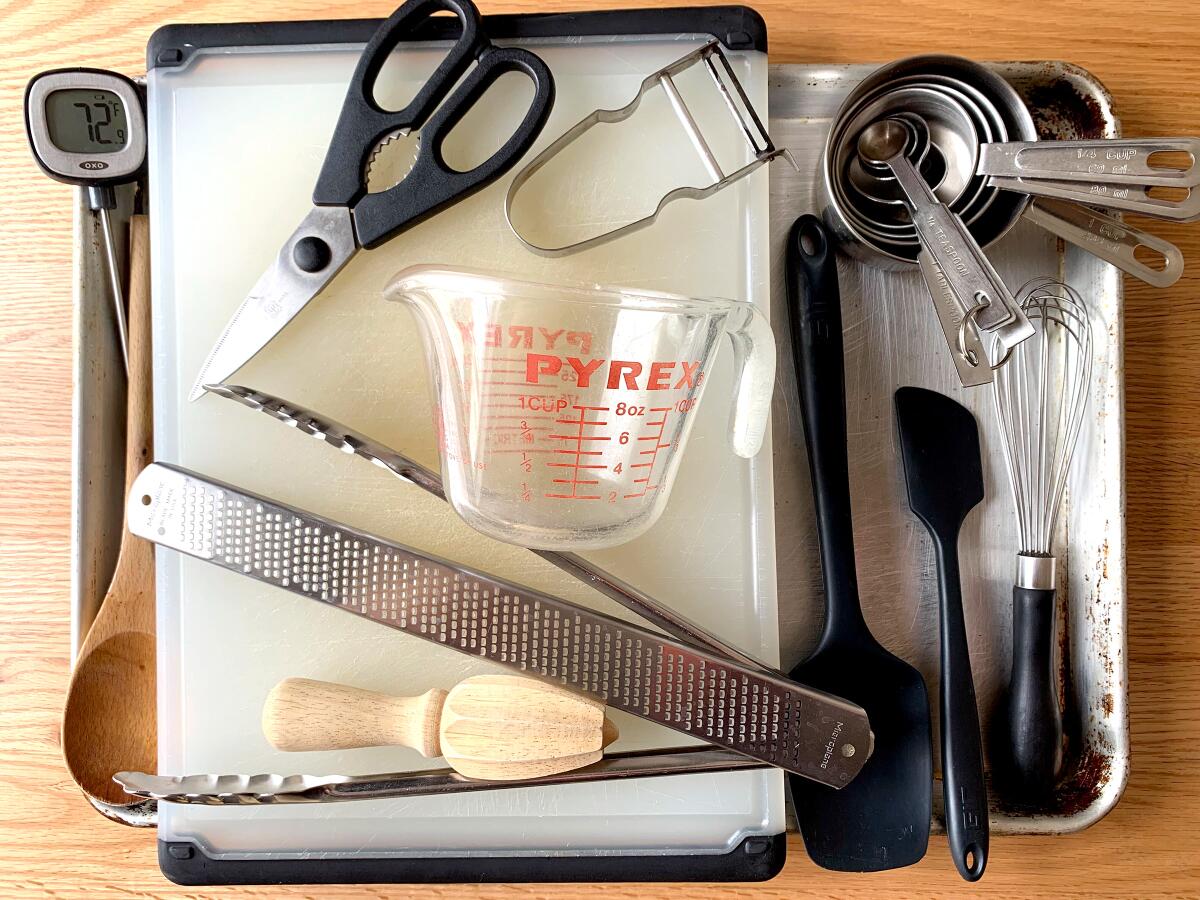
- Share via
How to Boil Water
With so many of you having to stay home and cook for the first time — ever or more than you have in a long time — we get that it can be overwhelming to have to cook all your meals from scratch. So, we’re here to get you started.
Each day we’re going to post a new skill here and go in detail about how to do it — a resource for cooking basics so you can get food on the table and get through this.
A series of simple tutorials for making some basic recipes at home.
Lesson 51: Essential Cooking Equipment
When most people ask me what is the essential, basic equipment I recommend they keep in their kitchen, I typically tell them, “You won’t like the answer.” That’s because they’re usually looking for the sleekest, coolest, most graphically stunning pieces, and well, that’s just not my priority.
After spending more than a decade cooking in restaurants and test kitchens where I tried out and used virtually everything there is that slices, sautés or snips, I prefer my equipment as bare-bones, utilitarian and easy to clean as possible. Aesthetics are for lamps, not vegetable peelers.
Below are my brand-specific recommendations — no endorsements, just ones that have stood the test of time and use in my kitchen, the majority of which are very inexpensive. Some of these might not seem right for you, but I encourage you to try them and let me prove to you that you don’t need a lot of bells and whistles to get dinner on the table.
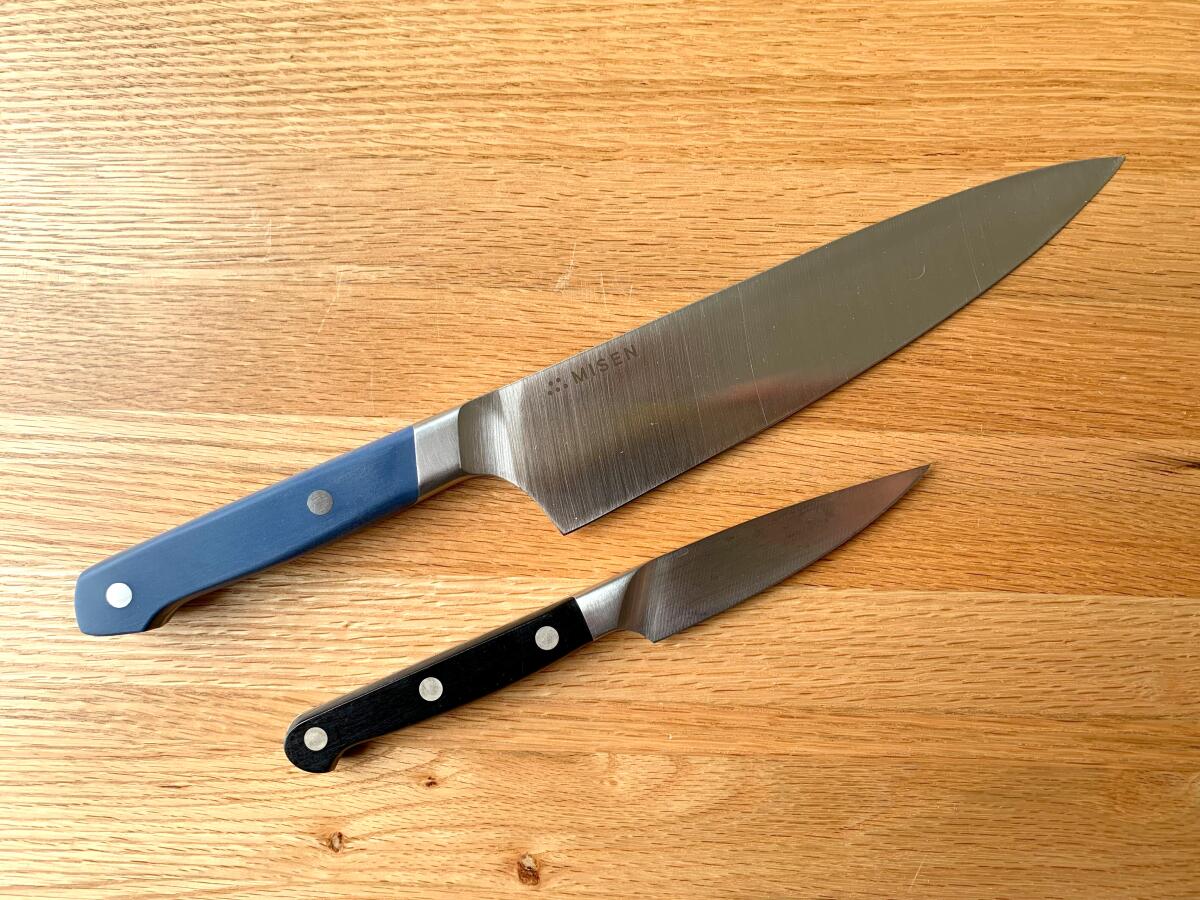
Knives (chef’s, paring, serrated)
The best way to find out which brand is best for you is to go to a cooking wares retailer and hold every type of knife in your hand, miming as if you were cutting something. Whichever is the most comfortable is the brand you buy, period. If you don’t ever put it in the dishwasher and keep it sharp, it’ll last forever.
I have a collection of 20 (yes, literally) knives that I keep on magnetic strips along the wall in my kitchen. I use some on occasion and some are sentimental but the ones I reach for every single day are my 8-inch chef’s knife from Misen and my paring knife from Zwilling. The sloping hilt of both knives fits most comfortably in my hand.
Whatever brand you choose, you need one chef’s knife and one paring knife. If you want to buy a set, make sure it has a serrated knife too — it’s not absolutely essential but comes in handy for slicing bread and chopping nuts or chocolate.
Stainless 3-quart saucepan
If you’re only going to own one saucepan, make it this. I prefer the sturdy All-Clad d5 pot because the bottom is made of five layers of metal — with an extra layer of stainless steel — for even heat distribution. It’s the Goldilocks of pans: you can boil pasta for one or two or make soup for four to six. This make of a 3-quart saucepan isn’t cheap, but it will last you the rest of your life.
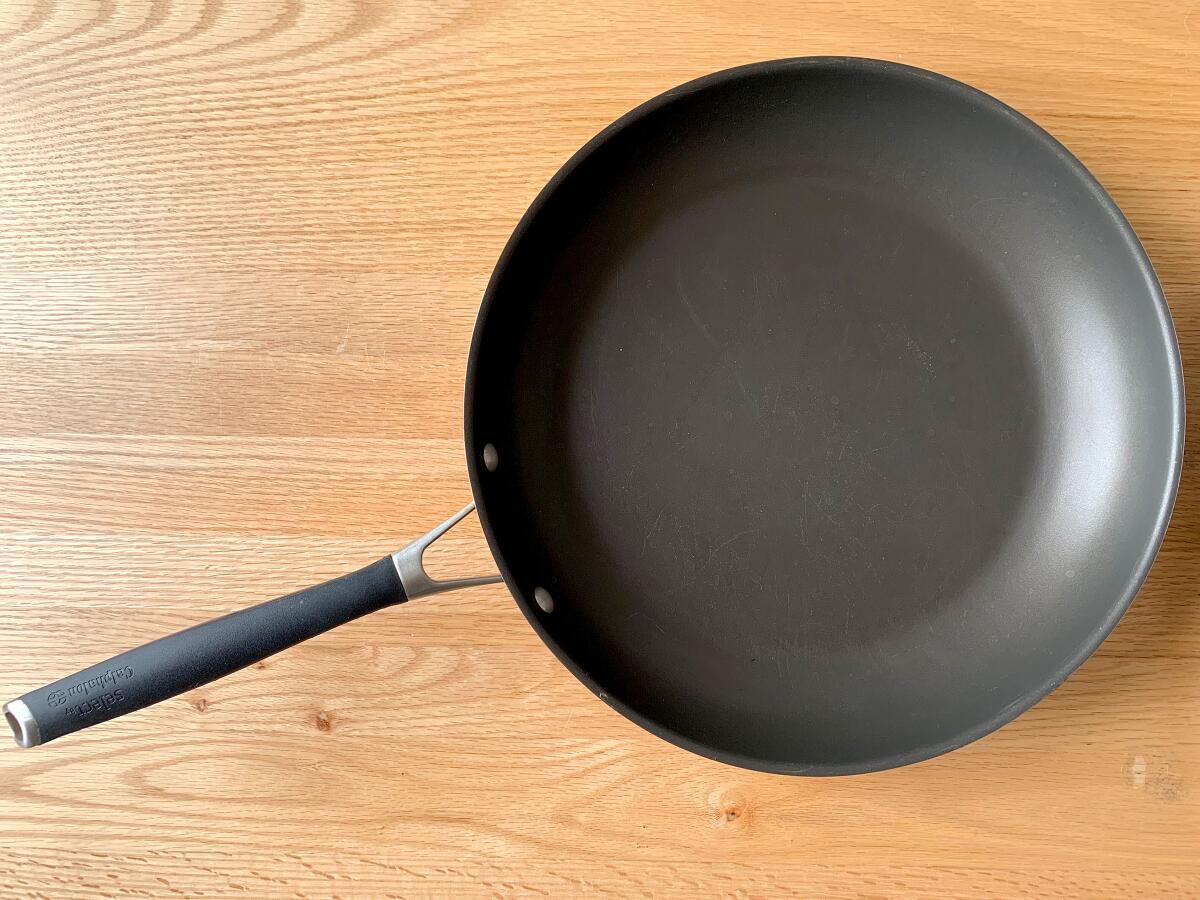
Large nonstick skillet
Even though I have lots of stainless steel skillets, I never use them — I always grab a high-quality nonstick pan, whether I am searing steaks, stir-frying vegetables or gently scrambling eggs. Calphalon’s 12-inch skillet is the one I love — bonus: It’s also oven-safe — but buy whatever model is comfortable in your hand and large enough for what you cook on a daily basis.
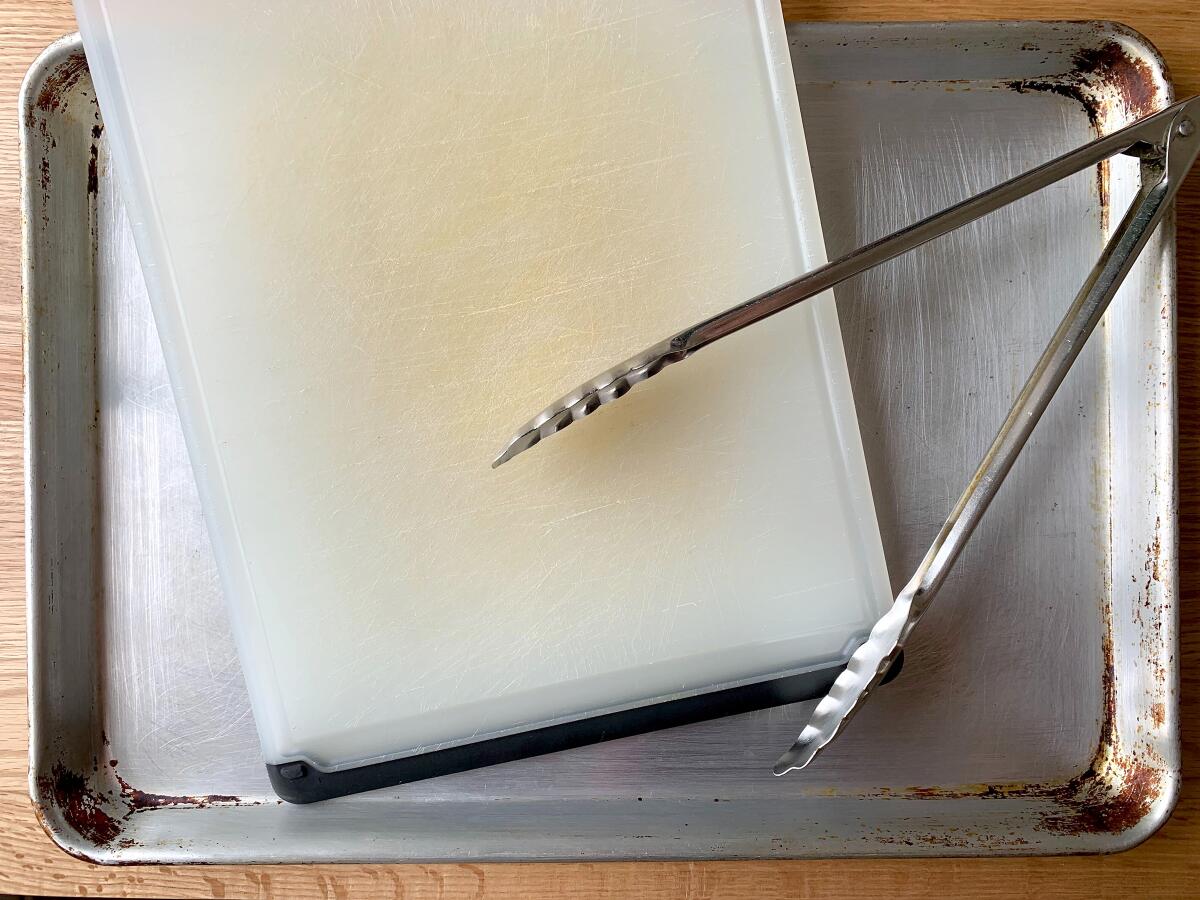
Plastic cutting board
Sure, wooden boards look great, are sturdy and are handy to keep out on your counter to use all the time. I have a couple, but honestly, they’re so clunky to clean and the thought of meat drippings and vegetable juices commingling in the absorbent material and feeding bacteria gives me the willies no matter how well I clean it. I keep a set of quality plastic boards from OXO to use on a daily basis. They’re light, they’re easy to clean in my small apartment kitchen sink and the rubber bumpers keep them from sliding around on the counter.
Rimmed baking sheets (half-sheet pans)
Roasting might be the most common cooking technique in my kitchen — it’s so easy to throw food on a baking sheet with some oil and seasonings and let the oven do the work. So, it makes sense that you keep a couple sturdy rimmed baking sheets on hand for those tasks. Chicago Metallic’s pans are the restaurant standard, and they’re very affordable — I advise you buy three or four and use some for heavy-duty high-heat roasting while others are reserved for baking cookies.
Tongs
Whether you need to toss and serve salad greens or snatch mozzarella sticks from the deep fryer, you’ll want a simple pair of tongs for both jobs. Think of them as an extension of your fingers — much easier to use than endlessly chasing food around hot water or oil with a spoon. I keep a basic stainless steel pair and use it for everything. I prefer ones without that pesky ring that keeps the arms closed, but if you like that feature, it’s easy to find a pair with it.
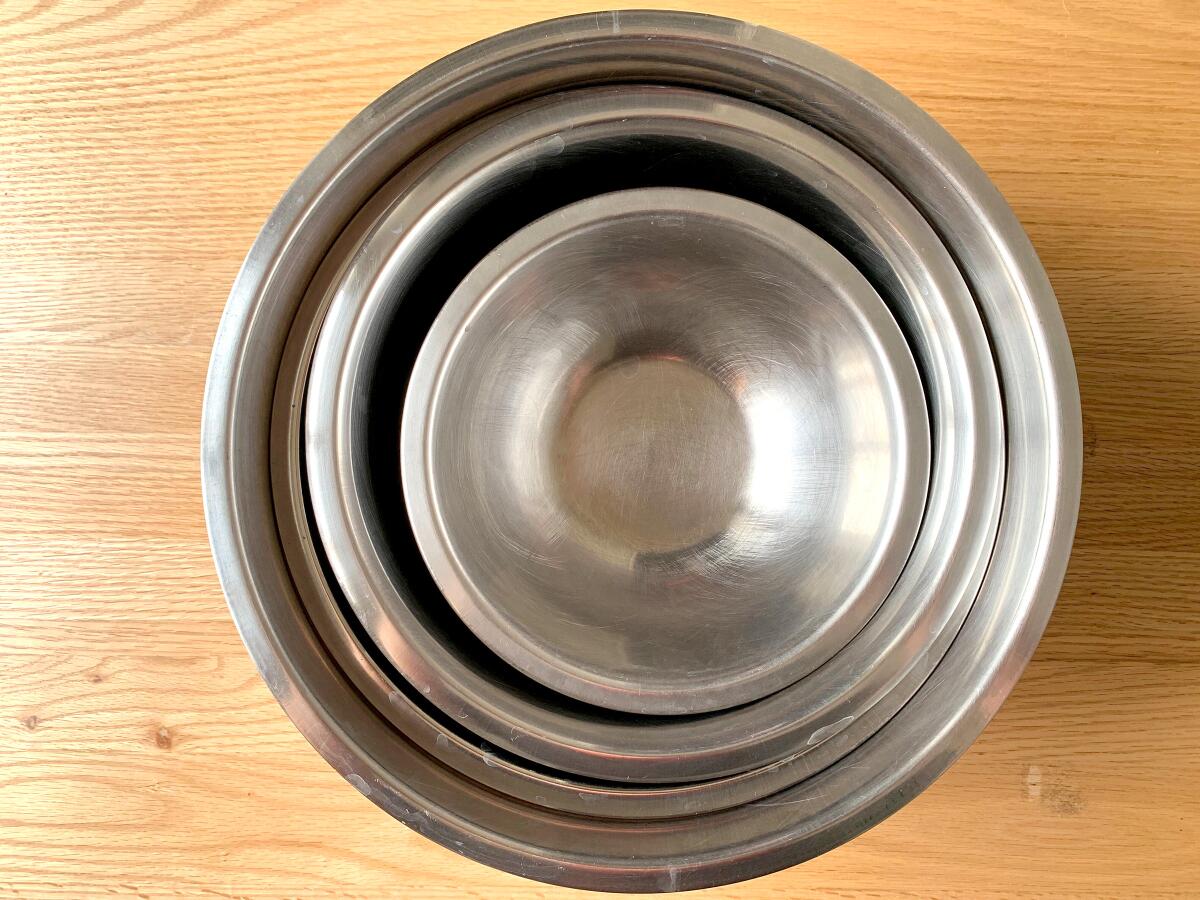
A set of metal bowls
Small, medium and large mixing bowls are called for a lot, whether they’re for mixing muffin batter, tossing greens with vinaigrette or making mayonnaise. You see a lot of glass bowls in photos, but I prefer metal because they’re lighter and easier to handle. They transfer heat quickly, so they’re better as the top of a double boiler for melting chocolate or to plunge into a larger bowl of ice water to quickly cool down a custard. I’ve had my set from Winco for over a decade, and they’ve been used virtually every time I’m in the kitchen ever since.
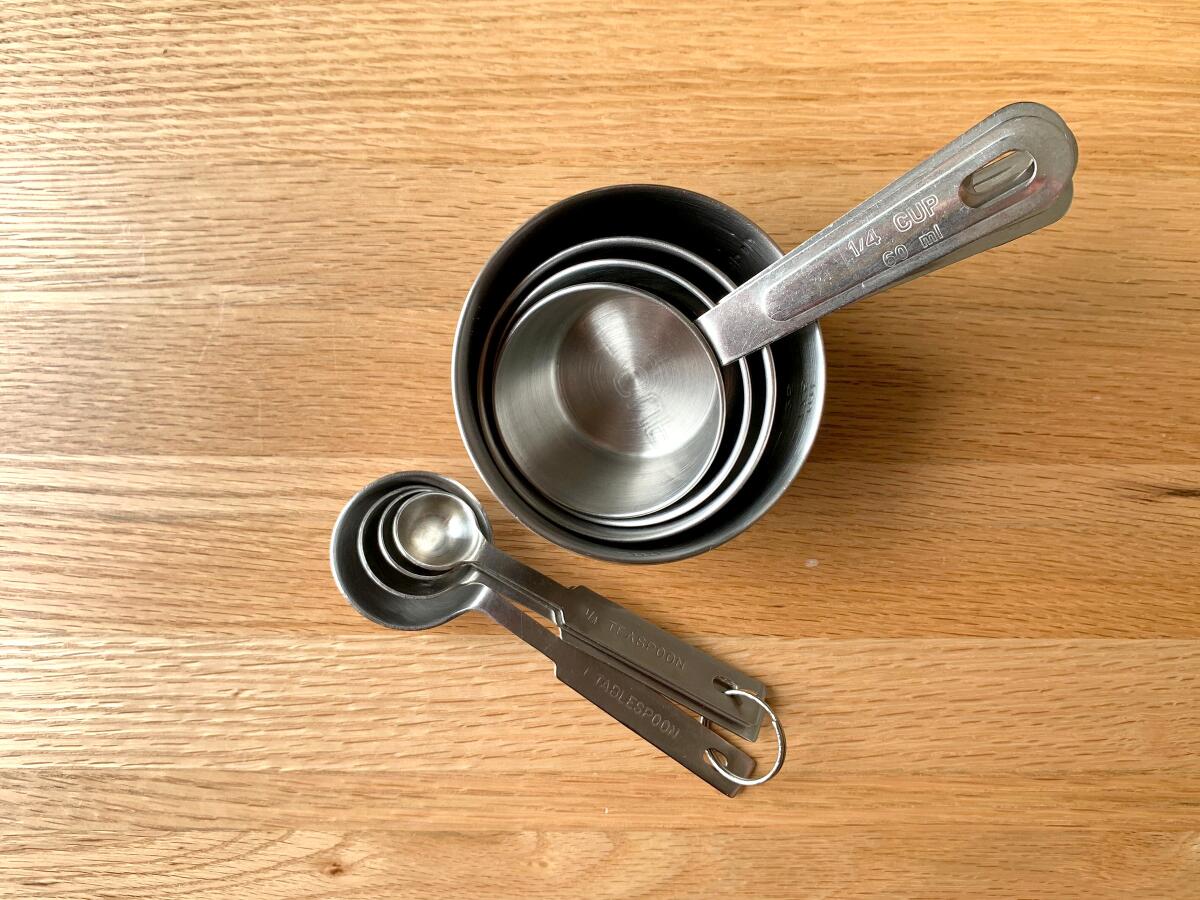
A set of graduated dry measuring cups and spoons
There are some things to spend a lot of money on, and then there are dry measuring cups and spoons. The simplest, plainest ones are best because they’ll be easiest to clean and are most efficient at measuring dry ingredients, such as flour, sugar or even packed herb leaves. Sure, go ahead and buy the cheap plastic versions at the grocery store if you want, but I like the simple 4-piece metal cups and 4-piece spoons made by Vollrath.
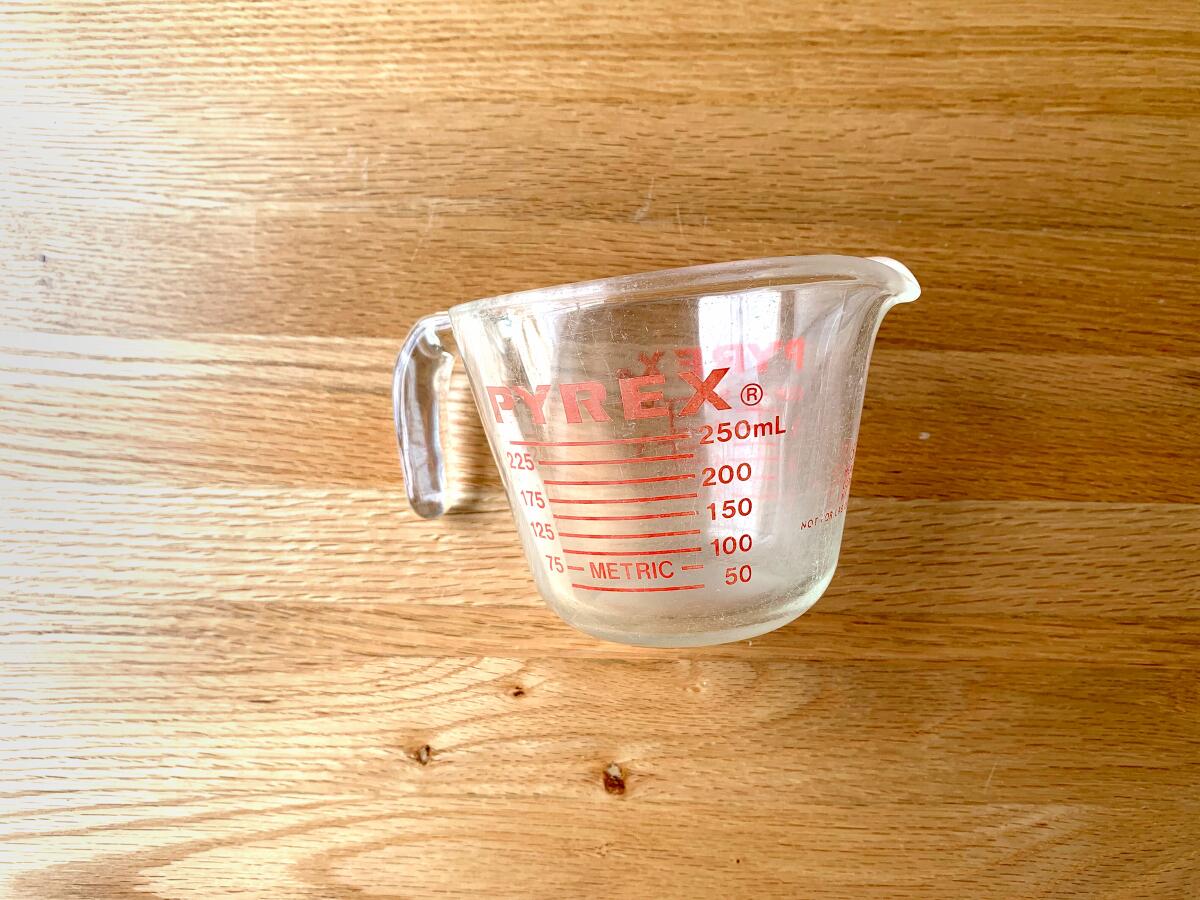
1-cup liquid measuring cup
Liquid measuring cups come in all sorts of materials and measurements but I’ve yet to find one that beats the practicality of the classic Pyrex 1-cup glass model. That standard size allows you to measure as little as 1/4-cup and you can refill it ad infinitum to make larger cup amounts. It can handle boiling hot liquids and freezing cold ones and you can even microwave it to melt butter or warm milk for making yeast breads. If you end up wanting the convenience of larger or smaller cups, buy them, but to start, you can’t beat this size.
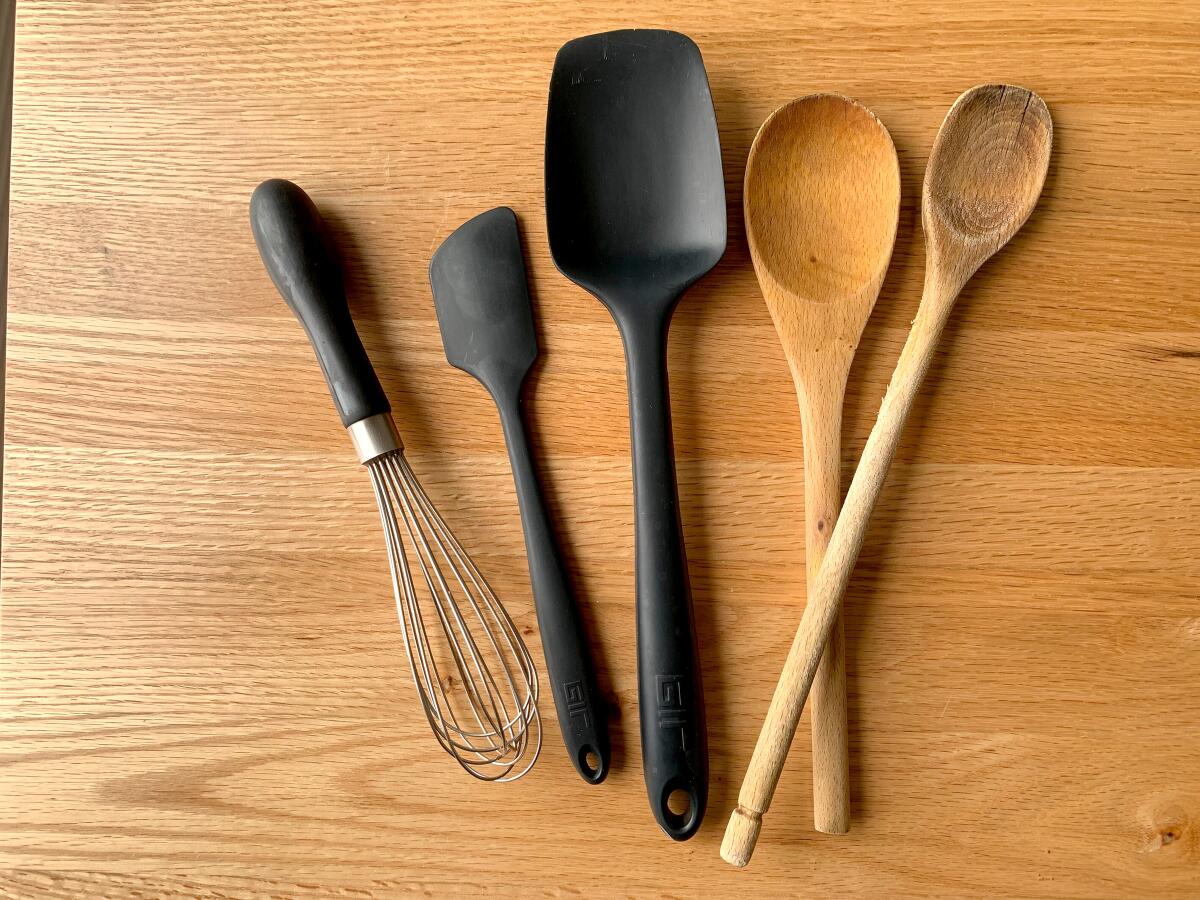
Wooden spoons
Throw away those cheap plastic stirring spoons you bought at the grocery store right now and instead invest in some good ol’ wooden spoons. It really doesn’t matter what brand; what matters is that you can use them for everything and in every pan without worrying about damaging nonstick, cast iron or enameled surfaces. I keep a couple around for stirring savory tomato sauces and spice-filled curries and soups and then a few for mixing bread dough and stirring sweets like pudding or jam. Wash them immediately after use and let them air dry completely before you put them away and they’ll last for years to come.
Whisks
This is possibly my favorite piece of equipment. I have virtually every style of whisk, from large balloon styles, great for whipping cream, to a small coil I like to use to scrape the bits off the bottom of a pan when making pan sauces. But the one I reach for the most is OXO’s 9-inch whisk. It’s got the strongest wires that never bend or warp, and the ergonomic black rubber handle fits the best in my hand. Upgrade with several sizes once it becomes your kitchen fetish too.
Silicone spatulas
When it comes to scraping cake batter or sauces out of bowls, pots and measuring cups, I live and die by my silicone spatulas. I like the GIR brand mini spatula the most for getting into tight corners and its good-for-every-task size, but I also often use the larger spoonula for times when I want to scrape and scoop, like when serving mashed potatoes or pouring chunky fruit preserves into jars. They’re made of one solid piece of material so they’re easy to clean and there are no annoying parts that fall off while using them.
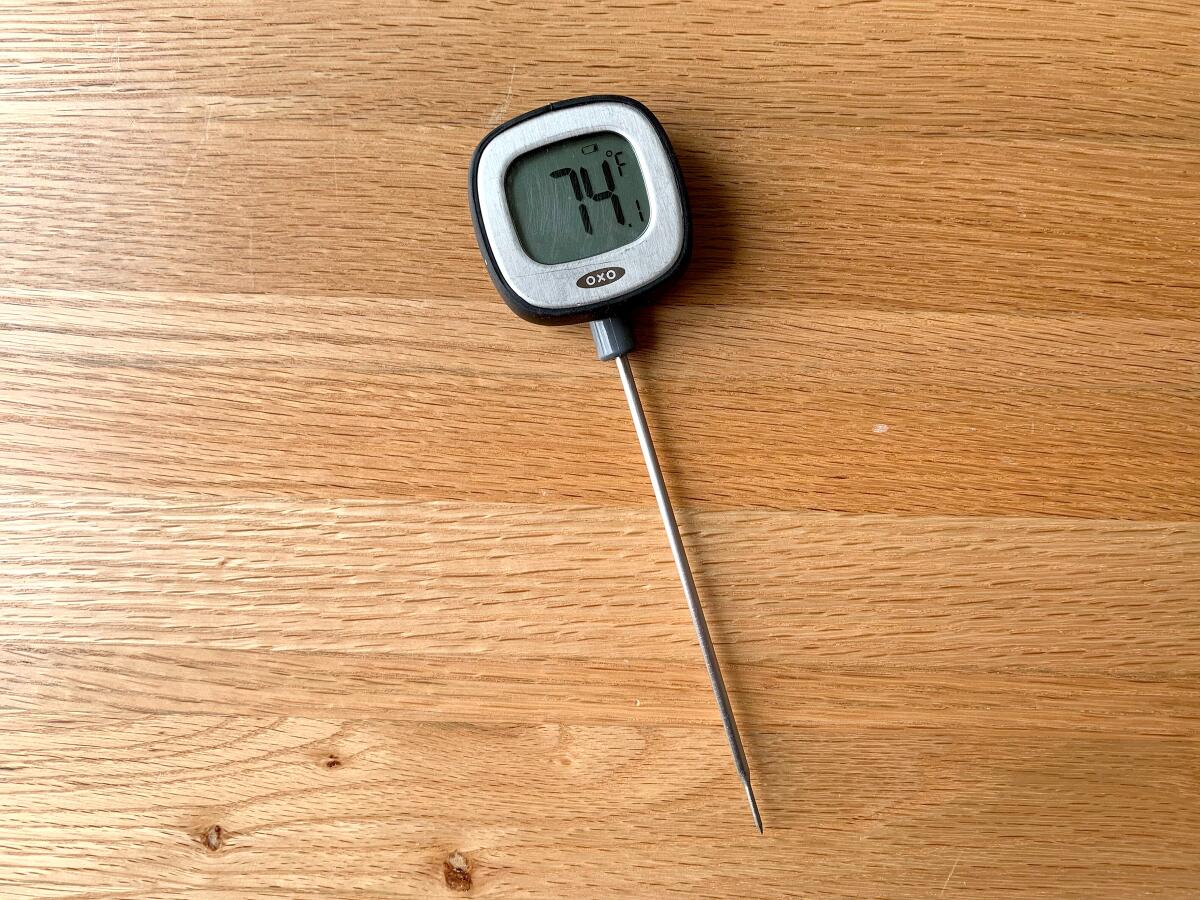
Digital instant-read thermometer
An instant-read thermometer may seem unnecessary or like a luxury piece of equipment, but having one will actually make your cooking life much less stressful. Much as a scale makes measuring ingredients in baking more efficient and precise, so does an instant-read thermometer, taking away any ambiguity about whether your steak or chicken breast is cooked through. Simply pierce the meat with the thermometer — I prefer OXO’s digital model — to know for sure, instead of cutting into the meat while it’s in the skillet, spilling all the juice and cutting up the surface of your pan (don’t act like I don’t see that!).
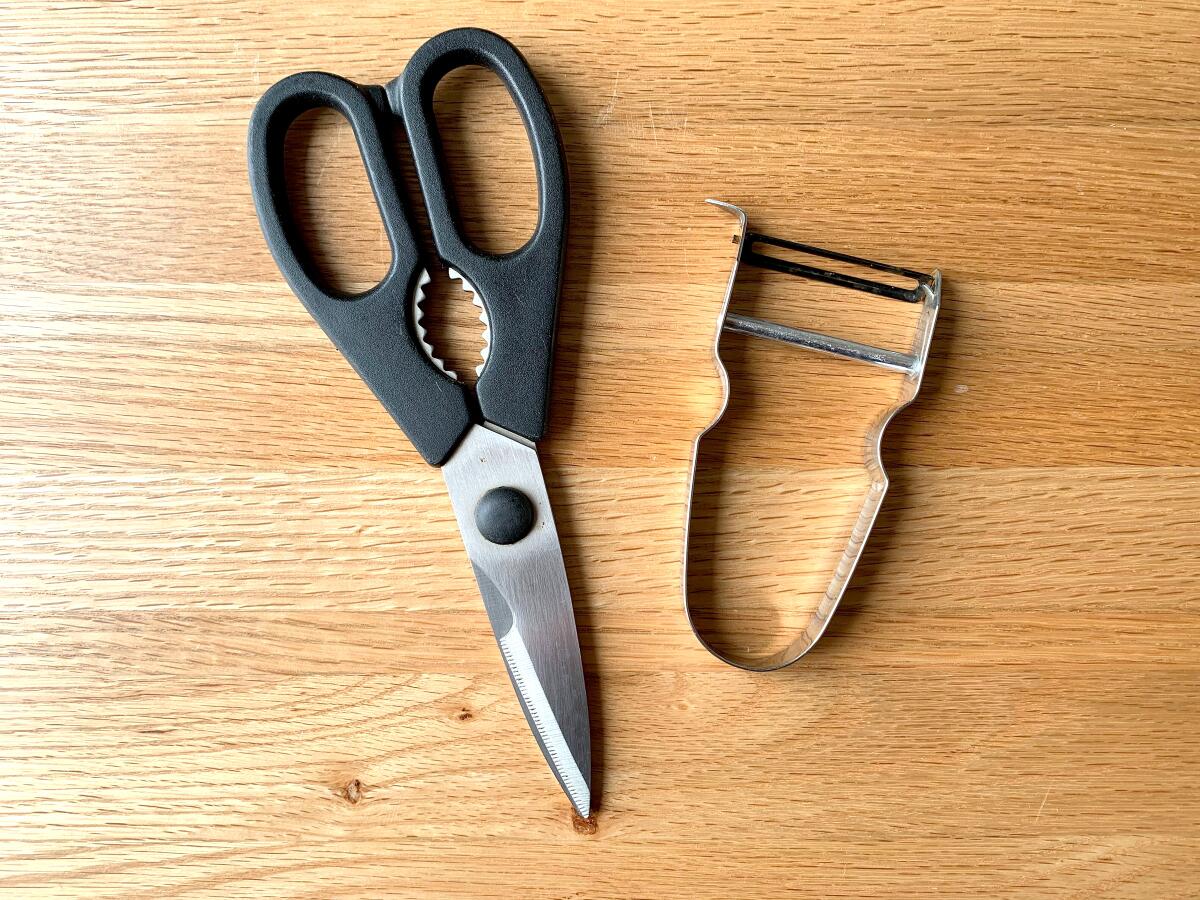
Kitchen shears
One kitchen tool I take for granted is my pair of kitchen shears. I use them mostly for trimming off the top of potato chip bags but I also use them to break down a chicken into parts, snip kitchen twine for tying around pork roasts and even for cracking open in-shell nuts. Any job where you’d need scissors, use these instead of trying to use that unsanitary pair from your craft table. I use this model from Wüsthof (you have to buy it with a paring knife), but any pair that comes apart for cleaning and fits most comfortably in your hand is the one you want.
Vegetable peeler
The right vegetable peeler depends on highly individual preferences. I like the Y-shaped ones like the affordable plastic models from Kuhn Rikon, which are what I recommend for beginner cooks, although I use the harder-to-find classic French Castor model. You’ll find yourself using whatever peeler you choose to do lots of tasks, from peeling potatoes and citrus skin to slicing off ribbons of carrot or zucchini for salads.
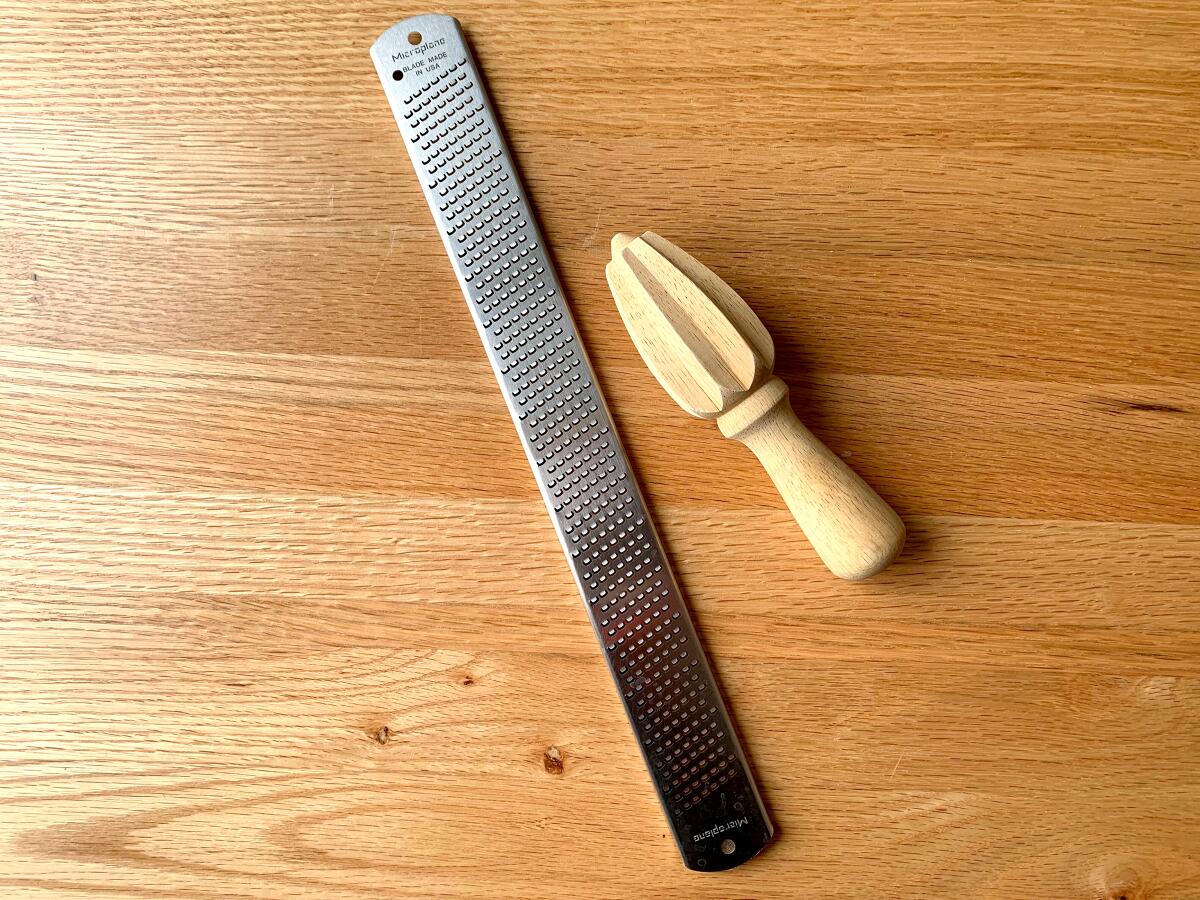
Citrus reamer and Microplane
These two aren’t absolutely essential, but judging by the amount of lemon I use in recipes, they’re pretty essential to me. A simple wooden citrus reamer will get the most juice out of your lemons, limes and oranges. And a Microplane grater — I prefer the model without a handle — will get all the zest off easily and efficiently. The Microplane grater also can be used to grate garlic or ginger or produce feather-fine shavings of Parmesan to rain down over your pasta. Who wants to live without one?
More to Read
Eat your way across L.A.
Get our weekly Tasting Notes newsletter for reviews, news and more.
You may occasionally receive promotional content from the Los Angeles Times.
